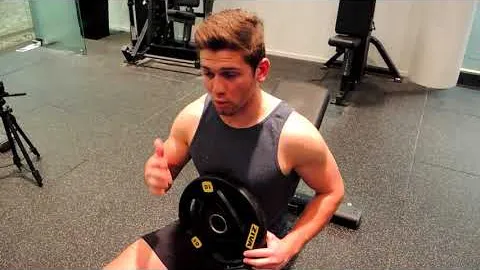What is the Incline Plate Press Exercise?
The incline plate press exercise is a popular upper body workout that targets the chest, shoulders, and triceps. This compound exercise requires the use of an incline bench and a barbell with weight plates. By adjusting the angle of the bench, you can target different areas of the chest and engage different muscle fibers.
Benefits of the Incline Plate Press Exercise
- Chest Development: The incline plate press targets the upper chest muscles, helping to build size and strength in this area. It also works the lower chest muscles to a lesser extent.
- Shoulder Development: This exercise engages the front deltoids (shoulders) as a secondary muscle group. It helps to develop rounder and fuller shoulders.
- Triceps Activation: The triceps muscles are also engaged during the incline plate press, assisting in pushing the weight overhead.
- Enhances Upper Body Strength: The incline plate press is a compound exercise that works multiple muscle groups simultaneously, leading to overall upper body strength gains.
- Improves Stability: This exercise requires core stability to maintain proper form and balance on the incline bench. Over time, it can improve overall stability and coordination.
- Variety: The incline plate press offers a variation to the traditional flat bench press. By changing the angle of the bench, you can target different areas of the chest while still engaging the same primary muscles.
- Functional Strength: The incline plate press exercise mimics pushing movements that we often encounter in everyday life, such as pushing heavy objects or shoving a door open.
Performing the Incline Plate Press Exercise
To perform the incline plate press exercise, follow these steps:
- Setup: Set an incline bench to your desired angle (usually between 30 to 45 degrees). Position yourself on the bench with your feet flat on the floor, shoulder-width apart. Make sure the barbell is racked at a convenient height to grip it.
- Grip: Grasp the bar with an overhand grip slightly wider than shoulder-width apart. Your palms should be facing forward.
- Lifting: Unrack the barbell, keeping your core engaged, shoulders retracted, and chest up. Lower the barbell towards your upper chest in a controlled motion, keeping your elbows tucked in at around 45 degrees. Aim to maintain good form throughout the exercise.
- Pushing: Push the barbell upwards by extending your arms, while exhaling and contracting your chest muscles. Ensure a full extension without completely locking out your elbows.
- Lowering: Lower the barbell back to the starting position with control, inhaling as you do so. Keep your elbows slightly bent and your chest engaged throughout the movement.
- Repetition: Repeat the lifting and pushing movements for your desired number of reps.
Tips for a Safe and Effective Incline Plate Press
To ensure you get the most out of your incline plate press exercise while minimizing the risk of injury, keep the following tips in mind:
- Warm-Up: Prior to starting any resistance exercise, it is essential to warm up the muscles and joints. Perform dynamic stretches and light cardio exercises to get your blood flowing and to prep your upper body for the workout.
- Proper Form: Maintain proper form throughout the exercise. This includes keeping your core engaged, chest up, and shoulders retracted. Avoid overarching your back or flaring your elbows out to the sides.
- Start with Light Weights: If you are new to the incline plate press, start with lighter weights to focus on getting your form right. Gradually increase the weight as you build strength and confidence.
- Use a Full Range of Motion: Lower the barbell until it touches your upper chest, and then fully extend your arms while pushing upwards. This will ensure you engage the targeted muscles throughout the exercise.
- Breathe Properly: Inhale as you lower the barbell towards your chest, and exhale as you push it away from your body. Proper breathing technique helps stabilize your core and provide more power during the movement.
- Rest and Recovery: Allow adequate recovery time between sets and workouts. This will help prevent overtraining and promote muscle growth and strength gains.
- Consult a Professional: If you are new to weightlifting or have any pre-existing medical conditions, it is recommended to consult a fitness professional or a qualified trainer before attempting any new exercises.
Incline Plate Press Variations
Once you have mastered the basic incline plate press exercise, you can further challenge yourself or target different muscle groups by incorporating different variations:
- Dumbbell Incline Press: Instead of using a barbell, use dumbbells to perform the exercise. This allows for a greater range of motion and better isolation of each side of the chest.
- Single-Arm Incline Press: Perform the exercise with one arm at a time, alternating between each set. This variation helps improve stability and address muscle imbalances between your left and right sides.
- Machine Incline Press: If you are unable to access a barbell or dumbbells, some fitness machines offer an incline press option. These machines provide stability and are suitable for beginners or those recovering from an injury.
Conclusion
The incline plate press exercise is an effective compound movement that targets the chest, shoulders, and triceps. By incorporating this exercise into your upper body workout routine, you can develop strength, enhance muscle growth, and improve stability and coordination. Just remember to prioritize safety, maintain proper form, and consult a professional if needed.
